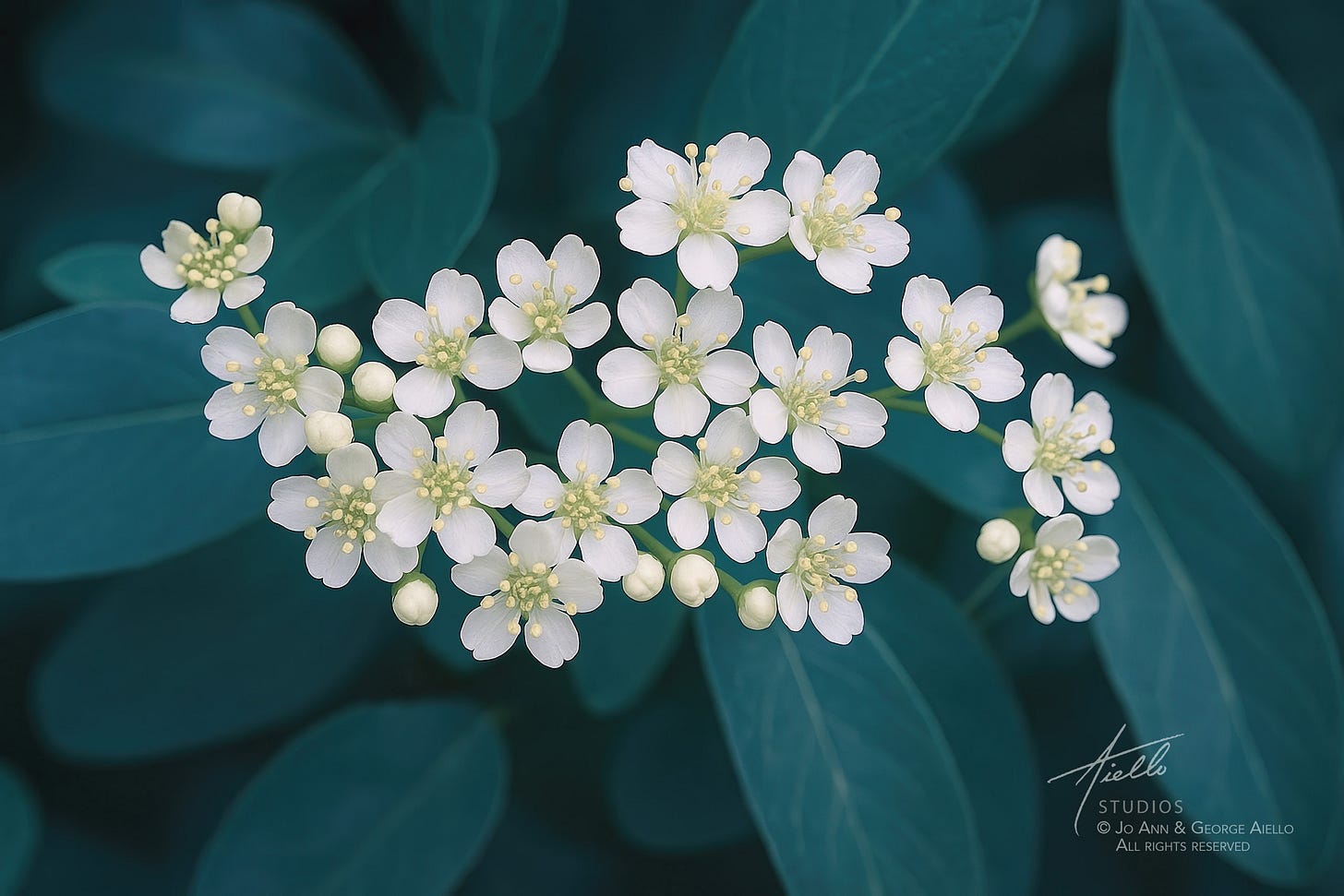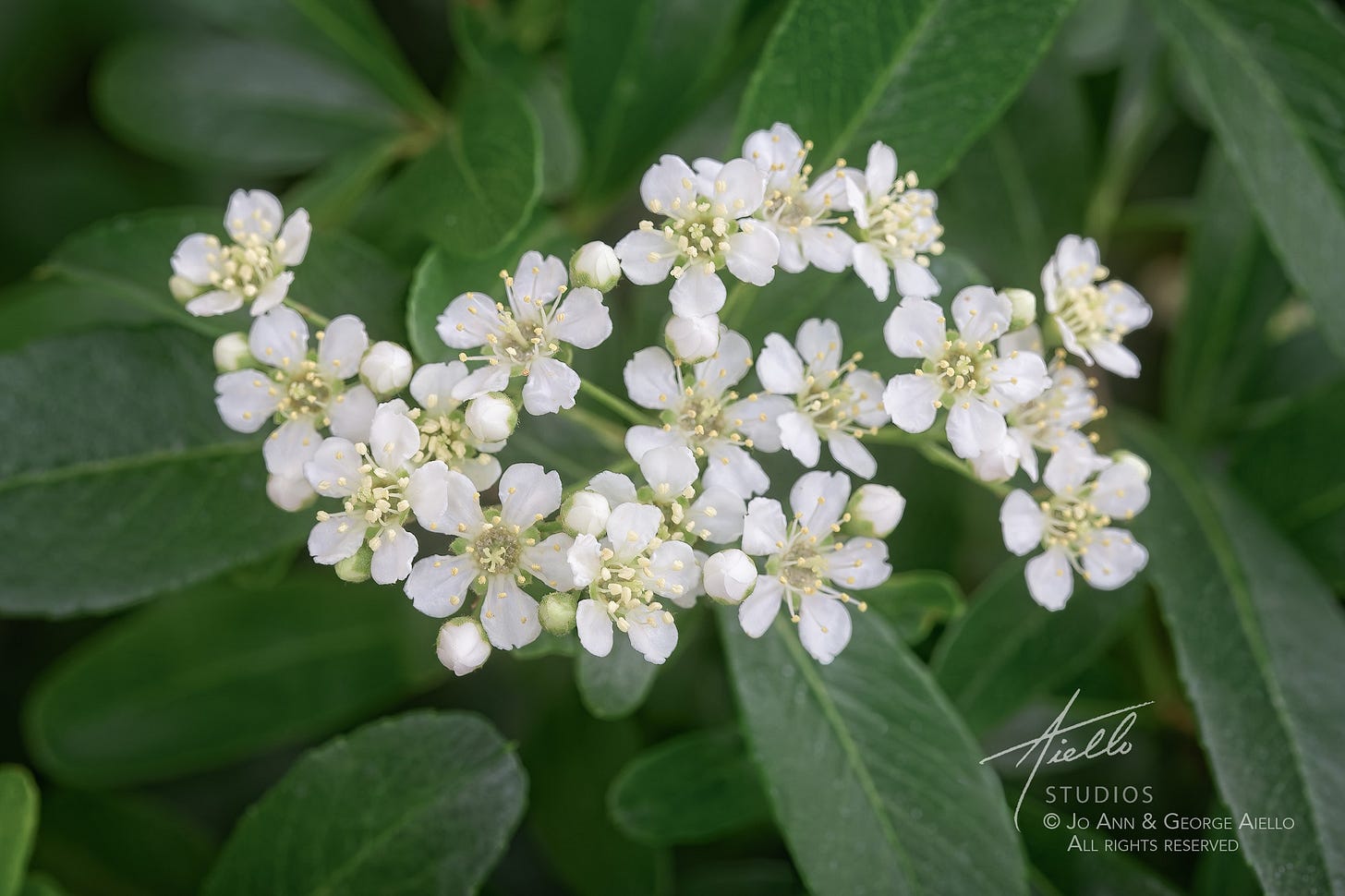Using ChatGPT To Edit A Photograph
A first look at using ChatGPT for practical, photo-based editing and transformation to digital art that retains your original vision.

In a recent experiment, we tried out ChatGPT’s latest image editing capabilities to reimagine a simple pyracantha blossom photograph. To be honest, I haven’t been a big fan of OpenAI’s image generator, DALL-E. Having said that, the conversational prompting approach of ChatGPT, along with its ability to learn from your history with it and make suggestions based on that history, is very interesting to me. It differs significantly from other image-generating platforms. This, plus the promotion of its new features, gave us reason to try it again. We were pleasantly surprised by the result.
Here’s a look at the steps we took to transform this image and what it may mean for photographers’ editing workflows.
Why Use ChatGPT for Image Editing?
Several AI platforms already enable the use of reference images, offering the ability to modify existing photographs with increasing control over selective edits. Some are better than others. None are perfect. For photographers, the integration of ChatGPT and DALL-E offers a novel approach to editing that, again, is more conversational in nature. We decided to start with some subtle color adjustments while attempting to preserve the artistic intent behind the original photo.

Step 1: Initial Image and ChatGPT Edits
We began with a straightforward close-up photograph of pyracantha blossoms, known for their bright white petals and small, pale yellow stamens. The original image features a deep green background, which, although natural, felt somewhat conventional for the effect we had in mind. We uploaded this image to ChatGPT and applied a simple prompt designed to modify the background only, treating the blossoms as if they were masked. Here’s the prompt:
"Keeping the blossoms intact as if masked, change only the green leaves, meaning the background, from green to a greenish blue tint."
Of course, we knew it would redraw the blossoms too, but the idea was to change them as little as possible. This particular prompt probably wouldn’t work well with other platforms. Then again, different platforms, such as Leonardo AI and Midjourney, offer settings that can be applied in addition to a text prompt, making them quite powerful tools.
ChatGPT’s multi-modal prompt-based imaging engine is strictly conversation-based. There are no settings to adjust and no interface features to learn. If you have a lot of experience working with it, you know how it learns to interpret your words and adapt its output over time to fit your style better. This can bring a better understanding of your intent that other platforms are not capable of. It will even suggest changes to prompts based on what you have written before and what it “knows” from your use history with it.
The result in this first test rendered the delicate flower details sharp and accurate, and pretty close, but not perfectly, to the original in structure and position. In other words, the composition remained relatively intact. The background leaves took on a richer, cool-toned hue as requested, which provided better contrast and a more modern feel. While decidedly digital art and no longer a photograph, there is no doubt that the image is made from our original photograph.
Step 2: Fine-Tuning in On1 Photo Raw and Photoshop
Based on our experience, every image we edit or transform using image generators requires additional work and fine-tuning. That’s just to be expected. In this case, once the initial color transformation was made, the image was brought into On1 Photo Raw for further refinement. This included selective exposure adjustments, contrast tuning, and a slight amount of dynamic contrast to ensure the flowers stood out against the new background.
Next, in Photoshop, we fine-tuned the color balance, removing a bit of an unwanted color cast, and made subtle adjustments to enhance the natural petal textures.
Step 3: Upscaling with Topaz Gigapixel
Generated images are small, even when upscaled on the platform. To ensure the final image was print-ready, we used Topaz Gigapixel for upscaling. This step preserves the fine details of the petals and stamens, reduces noise-like artifacts which are almost always present in generated images, and allows for large-format prints without sacrificing quality. We highly recommend both Topaz Photo AI and Gigapixel when working with generated images. You can read a comparison of both applications in our Substack article available here.
What’s Next?
This is just the beginning of our exploration into ChatGPT as a photo editor/transformation tool. As we continue, we’ll be sharing more examples, tutorials, and insights into how it, as well as the other AI tools, can complement traditional photographic workflows. I also plan to do some side-by-side comparisons using the various platforms. If you’re curious about these new capabilities, subscribe and stay tuned for more updates.

